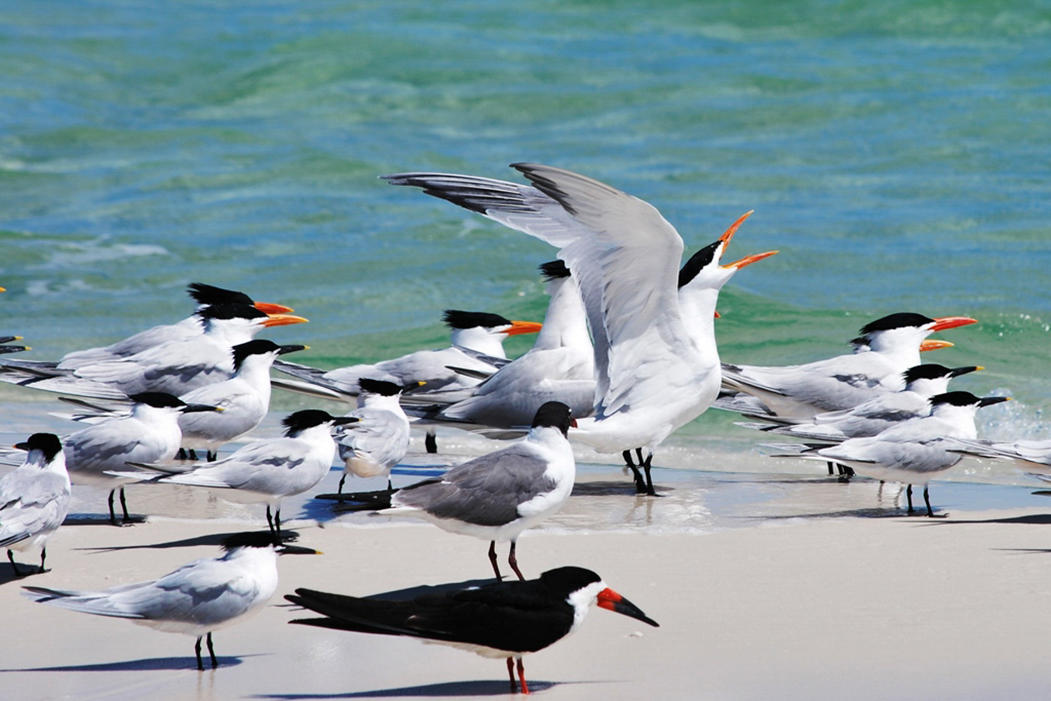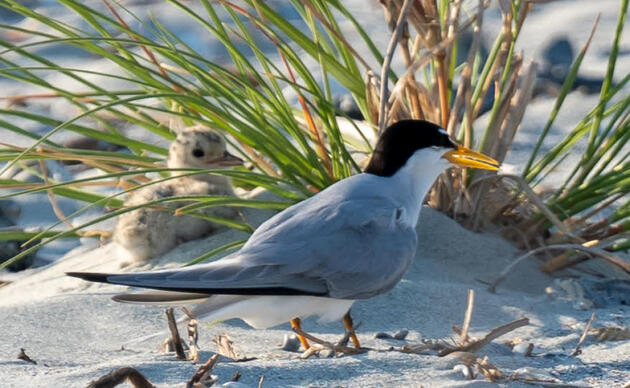Crab Bank Renourishment

On average, seabird and shorebird populations have dropped an astonishing 70 percent. With coastal development narrowing the nesting options for these birds, every spot of viable habitat is increasingly precious.
That’s why were excited about an upcoming opportunity to “renourish” Crab Bank.
Crab Bank is a narrow slice of sand in Charleston harbor that can support as many as 5,000 nesting birds in one season. It’s one of just five Seabird Sanctuaries protected by the South Carolina Department of Natural Resources, and it’s also designated a Globally Important Bird Area by Audubon.
But wind and waves have taken a toll on Crab Bank. Today, just a few hundred birds can nest on this shrinking crescent of sand.
So it’s big news that the U.S. Corps of Engineers might choose Crab Bank to receive sand they’ll soon dredge up to deepen and widen Charleston harbor. The catch is that it will cost an extra $3.5 million to make this happen. The cheaper choice is to dump the sand far out to sea.
Audubon is now helping to raise that money. If we succeed, it will be great news for birds that have nested here historically. They include Brown Pelicans, Black Skimmers, Laughing Gulls, American Oystercatchers, Wilson’s Plovers, Willets, Tricolored Herons, Great and Snowy Egrets, and a variety of terns (royal, least, sandwich, and gull-billed).
Renourishment will also benefit birds that forage on Crab Bank during the winter, including Dunlins, Dowitchers, Sanderlings, Double-crested Cormorants, and multiple gulls and plovers.
Note: Adding sand to a beach isn’t always good for birds. At Captain Sam’s Spit it would destroy critical habitat. But at Crab Bank it’s cool — it would rebuild habitat that’s now subtidal and currently of no use to birds.
Staff contact: Nolan Schillerstrom, nschillerstrom@audubon.org
Sanctuaries
Plan a trip to one of Audubon South Carolina's two wildlife sanctuaries in the state.








